
by Tom Barrett | Sep 11, 2019
Improve Your System’s Efficiency
and Avoid Costly Repairs
Did you know that your irrigation system accounts for between 50% and 75% of your home’s monthly water usage?
Did you also know that more plants die from overwatering than underwatering?
Those are just two of the many reasons that regular maintenance is needed to keep your sprinkler system running efficiently year after year. Here’s another: Damage from lawn equipment or improper winterization can result in costly leaks and other serious problems.
An Ounce of Prevention
Here are a few simple checks to perform on a monthly, annual or periodic basis to ensure your sprinkler system is operation at an optimal level:
Every Month During Growing Season…
 Inspect the controller and make sure it’s plugged in and functioning.
Inspect the controller and make sure it’s plugged in and functioning.
 Check the connection on all of the wires and sensors.
Check the connection on all of the wires and sensors.
 Adjust sprinkler head positions and spray patterns to avoid watering sidewalks or structures and to provide necessary clearance over growing plants.
Adjust sprinkler head positions and spray patterns to avoid watering sidewalks or structures and to provide necessary clearance over growing plants.
 Remove obstructions that prevent sprinklers from distributing water evenly.
Remove obstructions that prevent sprinklers from distributing water evenly.
 Check the pressure. Pressure can change over time and negatively affect your system’s efficiency. If the pressure is too high, it’ll result in significant runoff.
Check the pressure. Pressure can change over time and negatively affect your system’s efficiency. If the pressure is too high, it’ll result in significant runoff.
 Inspect your system for leaks — a huge water waster. This step requires the help of your irrigation contractor. He’ll not only check for leaks and broken or clogged spray heads; he can also advise you about common problems to watch for between visits.
Inspect your system for leaks — a huge water waster. This step requires the help of your irrigation contractor. He’ll not only check for leaks and broken or clogged spray heads; he can also advise you about common problems to watch for between visits.
–Article Continues Below–

Once a Year…
 Winterize, winterize, winterize! This routine maintenance procedure is critical. Overlook it, and you can expect costly damage to your system. But this is something best left to the professionals. Your irrigation contractor has specialized equipment to flush out the water that could otherwise freeze, resulting in cracked pipes, valves and other parts. (See related article, “How to Winterize Your Landscape Irrigation System.”)
Winterize, winterize, winterize! This routine maintenance procedure is critical. Overlook it, and you can expect costly damage to your system. But this is something best left to the professionals. Your irrigation contractor has specialized equipment to flush out the water that could otherwise freeze, resulting in cracked pipes, valves and other parts. (See related article, “How to Winterize Your Landscape Irrigation System.”)
 Get your back flow checked. Federal and state laws require that your backflow connection be tested annually by a state-certified tester. (This is typically part of the winterization process.)
Get your back flow checked. Federal and state laws require that your backflow connection be tested annually by a state-certified tester. (This is typically part of the winterization process.)
Once in a While or As Needed…
 Now and then, it’s a good idea to have your system audited. Hire a Certified Irrigation Auditor to conduct an audit and uniformity test. If your system is watering unevenly or improperly, he can make the necessary adjustments.
Now and then, it’s a good idea to have your system audited. Hire a Certified Irrigation Auditor to conduct an audit and uniformity test. If your system is watering unevenly or improperly, he can make the necessary adjustments.
 Replace your controller’s back-up battery whenever you replace your smoke alarm batteries.
Replace your controller’s back-up battery whenever you replace your smoke alarm batteries.
 Adjust the watering schedule to reflect the current season and irrigation needs of your landscape.
Adjust the watering schedule to reflect the current season and irrigation needs of your landscape.
With the proper routine maintenance, your irrigation system will serve you well for seasons to come!

Sources:
Conserve H20
Alliance for Water Efficiency

by Tom Barrett | Jul 10, 2019
Results Are in for Two-Year
Water Efficiency Study
Outdoor water efficiency programs work.
That’s the conclusion reached by the Alliance for Water Efficiency (AWE) following its two-year Landscape Transformation study. The AWE researched 14 different community-driven programs from across the country. In the final analysis, the AWE determined that these programs reduced outdoor water usage by 7 to 39 percent for program participants.
 The water efficiency programs studied included incentives for efficient irrigation technologies, free distribution of mulch, turf removal and water-wise re-landscaping, and customer site audits. Water savings were achieved in every community, regardless of the climate, program type or incentives for participation. (To download the Landscape Transformation Executive Summary, click here.)
The water efficiency programs studied included incentives for efficient irrigation technologies, free distribution of mulch, turf removal and water-wise re-landscaping, and customer site audits. Water savings were achieved in every community, regardless of the climate, program type or incentives for participation. (To download the Landscape Transformation Executive Summary, click here.)
According to the EPA, nearly nine billion gallons of water are used each day outdoors, mainly for landscape irrigation. In addition, as much as 50 percent of water used outdoors is wasted due to evaporation, inefficient or broken equipment, and overwatering.
AWE President and CEO Mary Ann Dickinson sees this as an opportunity:
“There are still significant water savings to be found by changing the way we look at our lawns. As communities consider their long-term supply options, they should look at landscape transformation programs to help their water utility avoid more costly infrastructure-based solutions.”
Survey Says…
In addition to the impact analysis of water utility programs, the AWE’s study also surveyed 3,000 North American homeowners to determine their interest in landscape transformation.
They found that homeowners typically misjudge the amount of water they use outdoors. More than half of those surveyed believe they use 10 to 30 percent of their overall water outdoors. But most homeowners in fact use 30 to 60 percent of their water outdoors, depending on the region and climate. (According to the EPA’s WaterSense program, the average American household uses more than 300 gallons of water per day.)
The AWE’s survey also revealed that most homeowners believe they are already efficient users of outdoor water. For instance, 41 percent stated that they already owned water-efficient sprinklers. However, industry manufacturers report that less than 20 percent of sprinkler head sales are for efficient models.
–Article Continues Below–

Seeking Sustainability
Survey respondents also indicated a growing interest in sustainable landscapes. Low water use was one of the top three selected landscape attributes (42 percent). Most homeowners surveyed are looking for a variety of landscaping features, preferring more trees, shrubs, flowers and entertaining space than lawn.
 Almost 80 percent of respondents were dissatisfied or only somewhat satisfied with their current landscaping, and half believed their lawns are unhealthy or only partially healthy. But 85 percent believe they would need assistance with a landscape makeover; they’re looking to landscapers and irrigation professionals to help them change their landscapes.
Almost 80 percent of respondents were dissatisfied or only somewhat satisfied with their current landscaping, and half believed their lawns are unhealthy or only partially healthy. But 85 percent believe they would need assistance with a landscape makeover; they’re looking to landscapers and irrigation professionals to help them change their landscapes.
The good news is: Survey respondents who had participated in an alternative landscaping program, were overwhelmingly (91 percent) satisfied with their new landscape. So homeowners want to use more sustainable landscaping, but they need help. That’s where irrigation professionals come in.
Advice from WaterSense
When consulting with homeowners about reducing their outdoor water waste, offer the following suggestions from WaterSense:
- Use regionally appropriate, drought-tolerant, or native plants that thrive in your climate.
 Check sprinkler heads for breaks or leaks and make sure water is going where it’s needed.
Check sprinkler heads for breaks or leaks and make sure water is going where it’s needed.
- Test your irrigation system to ensure the zones are programmed correctly.
- Check your irrigation system to look for water efficiency improvements.
- Create an irrigation schedule that makes seasonal adjustments easy.
- Retrofit your irrigation system with new, water-efficient technologies, such as a WaterSense labeled controller, rainfall sensor, or high-efficiency sprinkler nozzles.
Beautiful and Smart
Clearly, homeowners are beginning to realize that they don’t have to sacrifice a beautiful landscape in order to become more sustainable.
AWE’s Dickinson summed it up nicely:
“Beautiful landscapes are a source of pride for homeowners, but [they] also want to be smart water users. Whether it’s installing a more efficient irrigation system, opting for drought-tolerant turf, or re-landscaping with climate-appropriate plants, we need to communicate that a sustainable landscape can be beautiful and water-conscious.”
Sources:
Alliance for Water Efficiency
WaterSense

by Tom Barrett | Apr 3, 2019
It’s Spring Start-Up Time
for Your Irrigation System
Ah, Spring! Birds are singing…the weather is warming…lawns and gardens are starting to thaw.
Time to prepare your irrigation system for another year of efficient water management. To help you with that, we’ve compiled the best spring start-up tips from the pros at Rain Bird and Hunter Industries. Take a look:
Tips from Rain Bird
Just a few simple steps will go a long way towards saving water, money and preventing a mid-summer landscape catastrophe at home.
Make Sure Spring Has Sprung…
Although all signs might be pointing to the arrival of spring, the soil beneath the landscape is always the last to thaw. Starting your sprinkler system while the ground is still frozen can result in damage to the pipes. Use a shovel to make sure that the soil is frost-free 12 inches deep. If it is still solid as a rock, then wait another week and test it again before starting the sprinkler system.
Regain Control…
Run a check of the irrigation controls and programs. This includes dusting away the cobwebs on the timer, making sure the date and time is correct, and that the settings are appropriate for your landscape’s watering needs. Replace the back-up battery in the timer/controller every 6 months, and keep a copy of the watering schedule nearby.
Additional tip: Placing moth balls in an outdoor mounted controller will keep ants and other insects out of the controller cabinet.
Unobstructed Flow…
Check for rocks, dirt, sand and other types of debris that may block the even flow of water from sprinkler heads. Uneven distribution can lead to too much water in some areas and not enough in others, both resulting in an unhealthy landscape and wasted water. Inspect spray heads and make sure they haven’t become buried and debris has not accumulated around them during the winter.
Out with the Old…
Nozzles and sprinkler heads are designed to withstand normal wear and tear of irrigation, but are no match for errant lawn mowers, the neighbor’s dog or snowplows. Replace cracked, chipped or worn components, such as sprinkler heads, nozzles, valves or pipes. A broken sprinkler can wreak havoc on lawns, gardens, and water bills, so it is important to check and replace them periodically.

www.rainbird.com
The Heart of the System…
Valves are the heart of any irrigation system. They regulate the distribution of water throughout the entire system. A leaky valve will waste water, and increase your water bill. Visually inspect each valve to make sure they are operating properly. Before turning on any water to the system, make sure all manual drain valves are returned to the closed position. Overly wet areas in the lawn, resulting in muddy and/or barren patches, may be a result of a leaky valve.
Keep the Hammer in the Tool Chest…
Water hammer is a high-pressure surge that occurs when a valve is first opened. An initial pressure surge can result in pipe bursts and damaged valves. When restoring water to your sprinkler system, open the main water valve slowly to allow pipes to fill with water in a gradual and controlled manner, thus preventing a water hammer and costly damage.
Pressure Check…
When you first turn the main water valve back on, it is important to make sure the water pressure is at a safe operating range for sprinkler systems. A system with too much pressure will result in cracked pipes, busted valves, sprinkler head leaks and inefficient watering. Invest in a water pressure gauge that can be used to measure water pressure in your home and yard. These devices typically connect to a hose faucet and give you a good idea of the pressure in your irrigation system.
If the pressure is above the suggested operating range (typically 40 -65 PSI), a pressure regulator may be required to prevent damage to the sprinkler system or undesirable results. For example, if water is “misting” out of your sprinkler heads, your pressure is too high and should be reduced.
Tips from Hunter Industries
Spring cleaning your irrigation system prolongs life and improves watering efficiency, saving time, water and money
When spring arrives and freezing temperatures cease, it’s time to turn on irrigation systems and start watering again. However, when you do so, you should take a few very important steps to make sure you do not damage pipes or irrigation components. It is always best to hire a professional contractor. We have provided a spring start-up guide below to help ensure your Hunter system is up and running with ease and efficiency.
STEP 1

www.hunterindustries.com
Open the system main water valve slowly to allow pipes to fill with water gradually. If these valves are opened too quickly, sprinkler main lines are subjected to high surge pressures, uncontrolled flow and water hammer, which may cause them to crack or burst.
STEP 2

www.hunterindustries.com
Verify the proper operation of each station valve by manually activating all zones from the controller.
STEP 3

www.hunterindustries.com
Walk through each station on the controller, checking for proper operation of the zone. Check for proper operating pressure (low pressure indicates a line break or missing sprinkler), proper rotation and adjustment of sprinkler heads, and adequate coverage. Check and clean filters on poorly performing sprinklers. Adjust heads to grade as necessary.
STEP 4

www.hunterindustries.com
Reprogram the controller for automatic watering. Replace the controller back-up battery if necessary.
STEP 5

www.hunterindustries.com
Uncover and clean the system weather sensor, if applicable.
Remember, it is always best to hire a qualified professional contractor when performing tasks like Spring Start-Up. Irrigation contractors are experts in hydraulics, proper sprinkler system layout, plant watering requirements and soil types. Their skills will ensure a water-efficient system and years of trouble-free operation.
Sources:
Rain Bird
Hunter Industries

by Tom Barrett | Mar 6, 2019
Fix a Leak Week Combats Water Waste
Every year the EPA sponsors “Fix a Leak Week” as a national effort to combat water waste.
That’s because, every year, household leaks can waste more than 1 trillion gallons of water nationwide! How much water is that? It’s…
- Enough to fill 40 million swimming pools and 24 billion bathtubs
- Almost equal to the capacity of Florida’s vast Lake Okeechobee
- Equal to the annual household water usage of more than 11 million homes
Plug Those Leaks!
 This year’s Fix a Leak Week runs from March 19 through March 25. It’s the perfect time to check for leaky kitchen and bathroom faucets, malfunctioning toilets and errant irrigation systems. Fixing some of these easily corrected household leaks can save homeowners about 10 percent on their water bills, according to the EPA.
This year’s Fix a Leak Week runs from March 19 through March 25. It’s the perfect time to check for leaky kitchen and bathroom faucets, malfunctioning toilets and errant irrigation systems. Fixing some of these easily corrected household leaks can save homeowners about 10 percent on their water bills, according to the EPA.
Karen Wirth is in charge of marketing and outreach for the EPA’s WaterSense program. In her view, most folks are clueless about the total amount of water wasted because they “see a couple of drips coming out of their shower head, or sprinkler outside, or faucet, it doesn’t seem like that much.”
Did You Know…
… Homeowners can save about 10 percent on their water bills just by plugging leaks?
So each year, the EPA hones in on the drips during Fix a Leak Week. Special events are planned from coast to coast to teach homeowners how to find and fix household leaks.
Easy Fixes
There’s a simple way to check for leaks in the toilet, Wirth said. “Just put a few drops of food coloring in the tank. If that shows up in the bowl, you have a leak.” This problem can often be fixed by simply replacing the flapper.
Replacing old and worn faucet washers and gaskets fixes most faucet leaks. For leaky shower heads, use pipe tape to secure the connection between the showerhead and the pipe stem.
For the EPA’s complete list of leak fixes, click here.
Call an Irrigation Professional
A residential irrigation system should be checked each spring before use to make sure it wasn’t damaged by frost or freezing. Even a leak as small as 1/32nd of an inch in diameter (about the thickness of a dime) can waste about 6,300 gallons of water per month!
Hire an irrigation professional certified by a WaterSense labeled program to inspect it for you. These professionals have passed a certification program focused on water efficiency. They’ll not only help detect and correct leaks in the system, but also maximize its efficiency.
Sources:
EPA
The Washington Post
Alliance for Water Efficiency

by Tom Barrett | Jan 2, 2019
Join Us February 27 at the Ohio Statehouse!
Ohio Green Industry Advocacy Day is hosted every other year by the Ohio Nursery and Landscape Association (ONLA) and the Ohio Irrigation Association.
You won’t want to miss this unique opportunity to network with colleagues, meet with state legislators, and make your voice heard on issues critical to irrigation professionals.
Benefit of Membership
 As one of the sponsors of this year’s Green Industry Advocacy Day, your Ohio Irrigation Association is counting on you. Legislative and regulatory advocacy is one of the key benefits of OIA membership. By becoming an active participant in legislative events, you strengthen this critical membership benefit.
As one of the sponsors of this year’s Green Industry Advocacy Day, your Ohio Irrigation Association is counting on you. Legislative and regulatory advocacy is one of the key benefits of OIA membership. By becoming an active participant in legislative events, you strengthen this critical membership benefit.
Advocacy Day is your chance to build relationships with two important groups: Green industry business partners, and members of the Ohio legislature and their staff. And who can tell our story better than you?

REGISTRATION
Registration is free to the first 20 Ohio IA members and $89 for non-members (includes lunch). Registration deadline is January 30, 2019.

What to Expect
Here’s what you can expect at this year’s Ohio Green Industry Advocacy Day:
The morning session will feature key legislative speakers (such as ONLA’s Legislator of the Year). You’ll also be briefed on discussion issues for the legislative meetings scheduled in the afternoon.
These meetings with elected officials offer you the opportunity to be a resource to policymakers on key irrigation issues like water quality, water quantity, and environmental reforms. Legislators want to make informed decisions, but in order to do that, the need to hear from us.

YOU possess the knowledge that can help advance decisions favorable to the irrigation industry. Let your voice be heard!
Here’s a tentative schedule for the day:
| 9:00 – 9:30 a.m. |
Registration & Continental Breakfast |
| 9:30 – 10:30 a.m. |
Guest Speaker or Panel Discussion |
| 10:30 – 11:30 a.m. |
Briefing Session
Learn about bills and issues.
Understand how to communicate with
your legislator
|
| 11:30 a.m. – Noon |
Guest Speaker from the Legislature |
| Noon – 1:00 p.m. |
Lunch and Networking |
| 1:00 – 4:30 p.m. |
Pre-scheduled Meeting with Legislators |
| 4:30 – 6:30 p.m. |
Legislative Reception |
Source:
ONLA

![]() Inspect the controller and make sure it’s plugged in and functioning.
Inspect the controller and make sure it’s plugged in and functioning.![]() Check the connection on all of the wires and sensors.
Check the connection on all of the wires and sensors.![]() Adjust sprinkler head positions and spray patterns to avoid watering sidewalks or structures and to provide necessary clearance over growing plants.
Adjust sprinkler head positions and spray patterns to avoid watering sidewalks or structures and to provide necessary clearance over growing plants.![]() Remove obstructions that prevent sprinklers from distributing water evenly.
Remove obstructions that prevent sprinklers from distributing water evenly.![]() Check the pressure. Pressure can change over time and negatively affect your system’s efficiency. If the pressure is too high, it’ll result in significant runoff.
Check the pressure. Pressure can change over time and negatively affect your system’s efficiency. If the pressure is too high, it’ll result in significant runoff.![]() Inspect your system for leaks — a huge water waster. This step requires the help of your irrigation contractor. He’ll not only check for leaks and broken or clogged spray heads; he can also advise you about common problems to watch for between visits.
Inspect your system for leaks — a huge water waster. This step requires the help of your irrigation contractor. He’ll not only check for leaks and broken or clogged spray heads; he can also advise you about common problems to watch for between visits.
![]() Winterize, winterize, winterize! This routine maintenance procedure is critical. Overlook it, and you can expect costly damage to your system. But this is something best left to the professionals. Your irrigation contractor has specialized equipment to flush out the water that could otherwise freeze, resulting in cracked pipes, valves and other parts. (See related article, “How to Winterize Your Landscape Irrigation System.”)
Winterize, winterize, winterize! This routine maintenance procedure is critical. Overlook it, and you can expect costly damage to your system. But this is something best left to the professionals. Your irrigation contractor has specialized equipment to flush out the water that could otherwise freeze, resulting in cracked pipes, valves and other parts. (See related article, “How to Winterize Your Landscape Irrigation System.”)![]() Get your back flow checked. Federal and state laws require that your backflow connection be tested annually by a state-certified tester. (This is typically part of the winterization process.)
Get your back flow checked. Federal and state laws require that your backflow connection be tested annually by a state-certified tester. (This is typically part of the winterization process.)![]() Now and then, it’s a good idea to have your system audited. Hire a Certified Irrigation Auditor to conduct an audit and uniformity test. If your system is watering unevenly or improperly, he can make the necessary adjustments.
Now and then, it’s a good idea to have your system audited. Hire a Certified Irrigation Auditor to conduct an audit and uniformity test. If your system is watering unevenly or improperly, he can make the necessary adjustments.![]() Replace your controller’s back-up battery whenever you replace your smoke alarm batteries.
Replace your controller’s back-up battery whenever you replace your smoke alarm batteries.![]() Adjust the watering schedule to reflect the current season and irrigation needs of your landscape.
Adjust the watering schedule to reflect the current season and irrigation needs of your landscape.


 The water efficiency programs studied included incentives for efficient irrigation technologies, free distribution of mulch, turf removal and water-wise re-landscaping, and customer site audits. Water savings were achieved in every community, regardless of the climate, program type or incentives for participation. (To download the Landscape Transformation Executive Summary,
The water efficiency programs studied included incentives for efficient irrigation technologies, free distribution of mulch, turf removal and water-wise re-landscaping, and customer site audits. Water savings were achieved in every community, regardless of the climate, program type or incentives for participation. (To download the Landscape Transformation Executive Summary, 
 Almost 80 percent of respondents were dissatisfied or only somewhat satisfied with their current landscaping, and half believed their lawns are unhealthy or only partially healthy. But 85 percent believe they would need assistance with a landscape makeover; they’re looking to landscapers and irrigation professionals to help them change their landscapes.
Almost 80 percent of respondents were dissatisfied or only somewhat satisfied with their current landscaping, and half believed their lawns are unhealthy or only partially healthy. But 85 percent believe they would need assistance with a landscape makeover; they’re looking to landscapers and irrigation professionals to help them change their landscapes. Check sprinkler heads for breaks or leaks and make sure water is going where it’s needed.
Check sprinkler heads for breaks or leaks and make sure water is going where it’s needed.

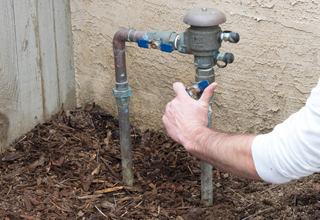
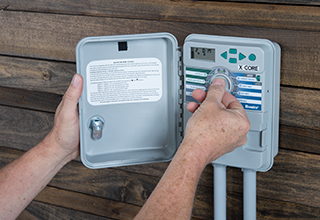
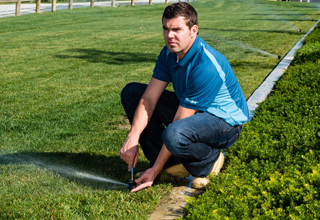
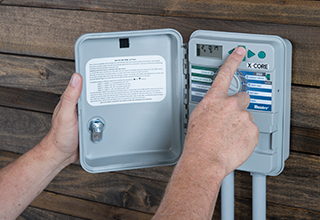
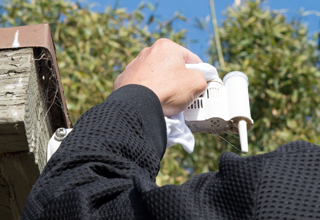

 This year’s Fix a Leak Week runs from March 19 through March 25. It’s the perfect time to check for l
This year’s Fix a Leak Week runs from March 19 through March 25. It’s the perfect time to check for l
 As one of the sponsors of this year’s Green Industry Advocacy Day, your Ohio Irrigation Association is counting on you. Legislative and regulatory advocacy is one of the key benefits of OIA membership. By becoming an active participant in legislative events, you strengthen this critical membership benefit.
As one of the sponsors of this year’s Green Industry Advocacy Day, your Ohio Irrigation Association is counting on you. Legislative and regulatory advocacy is one of the key benefits of OIA membership. By becoming an active participant in legislative events, you strengthen this critical membership benefit.




